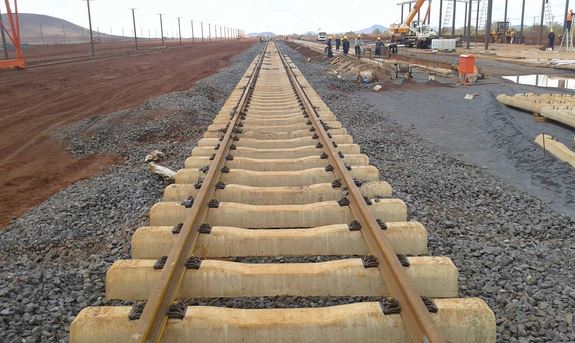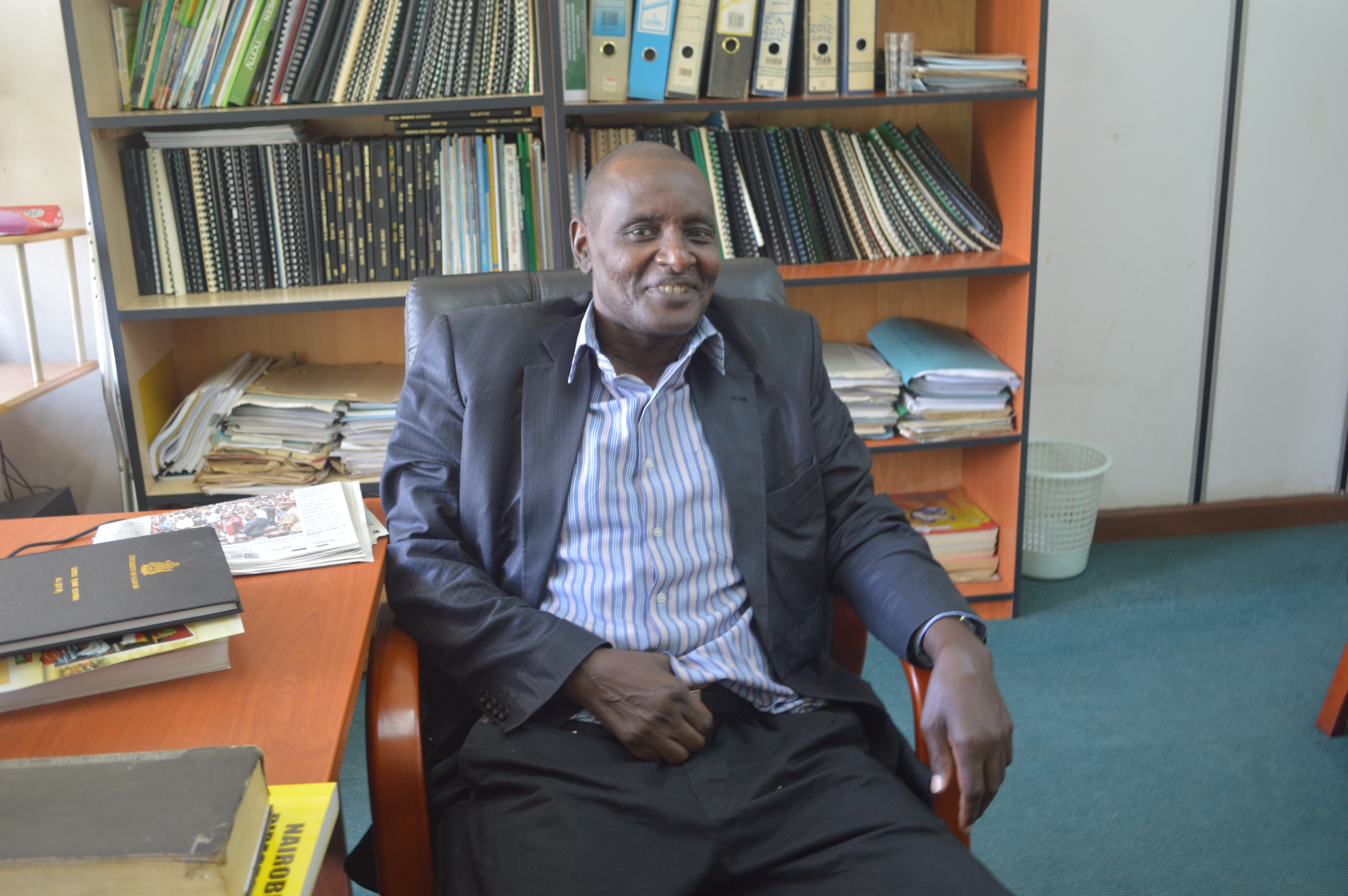By Mary Mwendwa

Christine Kodonyo from Narok County is angry and worried about what the Standard Gauge Railway (SGR ) mega project will bring to his Maasai community .
She is among many Narok residents living around Maai Mahiu who feel the SGR project has brought more misery than hope.
During a recent public hearing of the project at Maai Mahiu, community members one after another poured out their hearts concerning the challenges they are facing because of the project.
“Sisi kama Maasai, hatujafaidika na huu mradi kabisa .”As Maasai community we have not benefited from this project at all.
“We are not against any form of development, we know the government wants to grow the economy through such projects like SGR but we have some critical issues as a community that need to be addressed with seriousness.

First, this project that has been brought to us by people from China , these chinese come with a lot of discrimination.They are not friendly at all, they do not understand our language and are bad employers.People work from Monday to Sunday here.There are also other environmental issues like pollution , there is a lot of dust coming from the workstations and our children are always sick with respiratory tract infections.” Christine who is an activist complains bitterly .
Elijah Ole Koilel, a resident from Suswa in Narok also worries about the compensation plans .”We have many community members who have lost land to the SGR project and up to now no plan on how they will be compensated has been heard.Trees are also being destroyed in the whole process and nobody is talking about replacement.Another thing is that when people lose their land, the traditional manyattas will be lost, this is our heritage and it is very expensive to build a manyatta.”
Similarly, conservationists seem not to be left behind, they are of the opinion that the second face – Nairobi to Malaba of the SGR project needs to consider the environmental impacts especially to protected areas like Nairobi National Park (NNP)which is said if the railway passes through it will be highly threatened and more so wildlife that depend on it as a habitat will be endangered.

Generally, they say construction of the railway through protected areas is illegal and breaches some laws in Kenya, some of which are enshrined in the constitution.
Some of the major concerns revolve around ; Lack of proper public consultation and stakeholder engagement,disrespect of landowners rights to privacy and access to information,Lack of a comprehensive and inclusive environmental and social impact assessment (ESIA ) and lack of transparency on any feasibility studies conducted on the seven route options.
All these leading to an outcry for a re -look into the environmental impact assessment report .
According to Steve Itela, Director , Partnerships Development, African Network of Animal Welfare , the first Environmental Impact Assessment (EAI) report about the mega project said the railway will not pass through the park.”The NNP has so far lost 100 acres of land since the SGR started.As conservationists we feel the process has been flawed where no proper engagements have been put in place and also the park management plan is not clear .Most decisions are made at boardroom level where not all board members even approve some of the decisions they come up with.Major stakeholders like Kenya Wildlife Service (KWS) scientists are not involved in some of these processes.We fear five to ten years from now land near the park will be altered and also the park will be facing major challenges .”
Prof. Geoffrey Wahungu , Director General, Nema defended the allegations that no proper consultation were done on the EIA confirming that Submissions of the EIA were done in 2015 and a report sent to the various stakeholders in 2016.
On the other hand , Kenya Railways Managing Director , Atanas Maina confirms how Kenya Railways has been implementing the SGR project on behalf of Kenyans.”This project has been put in place to enhance social economy of the people.The project is in two phases; Nairobi – Mombasa and Nairobi -Malaba. We believe this project will have a huge impact on the people of East Africa. Infact, it was proposed by the leadership of the East Africa and we hope it will change lives in the next 200 years.It will help investors in the manufacturing industry and also help create more job opportunities.” He said.
Maina confirms railway will start operations in June 2017.
Dr. John Musingi,Senior lecturer , Department of Geography and Environmental studies, University of Nairobi says , “ We deal with environmental management and impact of projects.Our major concern is that the SGR is supposed to pass through NNP. It will affect the park negatively.The park is important for people of Nairobi .The park is close to the city and people can easily go to the park and see wildlife.This park is extremely important.
When the SGR passes through the park, it will divide the park in two sections , they say they will put a bridge where animals would pass, animals would not change behaviour. The contractor will be in park for 18 months, here human traffic and a lot of work will be going on . Within those months a whole section of the park will not be used.”

Dr.Musingi who is also an Environment Impact Assessment expert adds ; “The park has aesthetic value, it will be degraded that much. Once the park is divided into two sections we expect habitat fragmentation, therefore some animals will remain on one side. This will encourage inbreeding where species will be close to each other for a long time and hence very dangerous to the species of the park because they will start becoming genetically weak and prone to diseases.
We estimate the park will be divided , it will keep off animals from crossing to other parts of the park .Some of these issues are pressing.
SGR is important but let it not destroy the glory of conservation.
We suggested some routes which have not be considered arguing that it is expensive to use those routes. Long term benefits of the park are at stake, the park is very valuable, tourists spend so much money to tour Africa to see wildlife in their natural environment.”
On Environmental Impact Assessment of the railway project , Dr. Musingi puts his point straight , “Initially they were not planning to do EIA after we made noise it was more less done to suite a decision made in office, it ignored many important things, low participation, was poorly done and relied on data for phase one. EIA was poorly done, basically trying to validate something that had been done, it has so many gaps, it did not even consider even the value of the park.
“Animals do not have a voice, someone needs to speak on their behalf .”
Similarly ,Sidney Quntai , Chairperson for Coalition of Wildlife Conservation and Management agrees to the fact that there are a number of issues they have observed, “The process of EIA was flawed,on that basis we are asking Nema not to issue the licence.There is no detailed mitigation measures on how they will deal with negative impacts of the park.One of the challenges that we see is an escalation of human wildlife conflict, the park will be smaller, there is a 30 meter buffer zone.Once the railway is there no animal will be near the railway.These are habitats of rhinos which use it for breeding and many other species will be affected too.They have given examples of the railway passing through Tsavo Park, we are yet to see the impacts.Discussions on resettlement plan have not been done.This process is rushed, we went to court to challenge and they got a consultant who rushed things and was not done the way it should have been done.”

International experts have also come on board citing the long terms impacts of the railway project to protected areas.
Nairobi National Park, the only park in the world within a city ,silently crying to be saved from the impacts of the railway line to wildlife that depend on it as a habitat.
Rodney Van der Ree, Director of Ecology and infrastructure , School of BioSciences,The university of Melboune who reviewed the Environmental and Social Impact Assessment (ESIA ) for the SGR noted with concern how the ESIA for the Nairobi to Enoosupuka railway was poorly written.Saying it lacks many specific details and is biased towards supporting a single alignment.
“The ESIA is critically fallacious because it does not adequately identify all the potential ecological impacts of the proposed railway and many of the obvious and likely impacts that should be considered were either not mentioned at all or were covered very superficially.”













